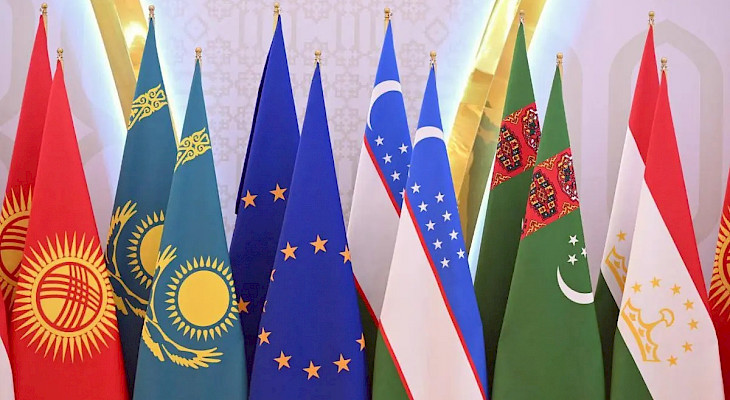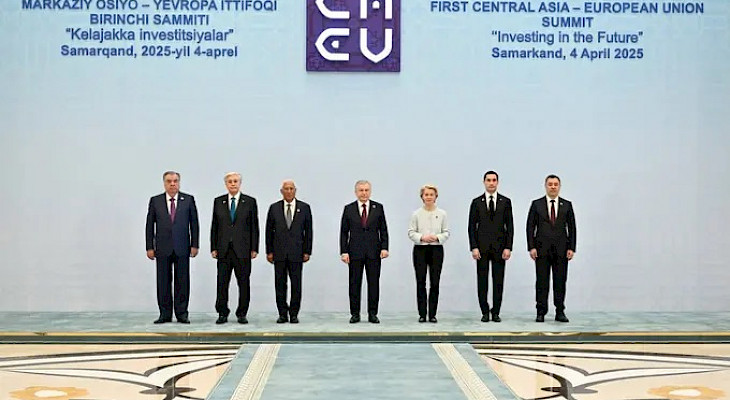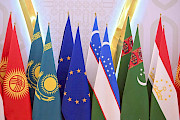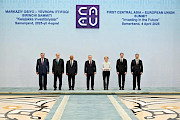The first summit between the Central Asian states and the European Union in Samarkand has officially added a new partner to the region’s favored “C5+” format. As is fitting for major debuts, the event was filled with declarations of friendship and strategic necessity. Whether Brussels' interests are merely about protocol-driven updates to the Central Asia strategy or have more far-reaching goals remains to be analyzed.
Expert Yuri Sarukhanyan’s article, summarizing the results of the “Central Asia - EU” summit held on April 3-4 in Samarkand with the participation of the heads of Central Asian states and EU leadership, was published by Gazeta.uz.
However, the focus here is different, writes the portal. The region’s cooperation with the EU carries symbolic significance. The relaunch of the regional dialogue in 2017 brought the topic of regional integration back into the media space. After all, in matters of integration, the EU serves as a role model. This is especially true given that the EU had already once played this role when Central Asian countries attempted to initiate an integration process in the mid-1990s to early 2000s.
However, at that time—compared to Europe’s experience—the region followed the reverse path. As is well known, the European integration model began with the European Coal and Steel Community, which evolved into the European Economic Community and later became the European Union.
The Central Asian states did the opposite. They started directly with the Central Asian Union, which then became the Central Asian Economic Community, later replaced by the Organization for Central Asian Cooperation. This last structure was quietly “buried” in 2005, plunging the region into a prolonged period of fragmentation and mutual distrust. In simple terms, if the EU is a model of integration, then Central Asia of that period was a model of disintegration.
The revival of regional dialogue, along with the notably amicable and complimentary rhetoric of recent years, seems to suggest that it may be time for the region’s countries to consider launching a new integration process or restarting the one abandoned in the mid-2000s. Such ideas are frequently mentioned in both official statements and expert analyses. It would not be surprising if the ceremoniously staged first Central Asia-EU summit reinforces this rhetoric. But are the region’s countries ready for this process?
Why is it premature to talk about integration?
To begin with, let’s define our stance on integration in general, writes the author. I believe that integration processes are a natural evolution in international relations, as people inherently dislike borders and seek mobility without restrictions. It is no coincidence that news about visa-free travel is often met with enthusiasm.
Moreover, once societies reach a certain level of development, they realize that it is better for borders to unite rather than divide. That it is preferable for borders to be crossed by civilian transport and tourists rather than military vehicles and soldiers. For instance, it is better not to fight over Alsace but to travel there for shopping.
As a grandson of an Armenian grandmother who cannot go without a glass of kefir in the evening, I often traveled by bus from Strasbourg, France, to Kehl, Germany, to buy kefir, as it was unavailable locally. The trip took about 15 minutes. Every time I watched people cross the border freely, barely noticing it, I wondered what those who had fought on this very spot centuries ago would think.
Yet, despite being a natural impulse, integration does not develop on its own. Certain conditions are necessary for its growth, and this is precisely where Central Asia faces challenges. The region’s countries are not yet ready for integration for several reasons.
First, nearly a decade of regional fragmentation, during which states distanced themselves from their regional identity, has left a lasting impact. Currently, there is no regional-level thinking among Central Asian states. Central Asia still does not exist as a unified geopolitical concept encompassing all five republics. Instead, the region is constantly being pulled into broader frameworks that serve the interests of external players—be it Russia’s "near abroad," Turkey’s "Turkic world," or the U.S.'s "Central and South Asia" concept.
Furthermore, within the region’s countries, the Central Asian agenda is not yet a priority. Discussions about the region arise only in response to specific events, such as the CA-EU summit or other “C5+” meetings. On a regular basis, the region is mentioned only sporadically.
Second, the revived regional dialogue remains more declarative than practical. Just as in the previous (dis)integration period, Central Asian states make statements about deepening cooperation and strengthening partnerships, yet they have not moved towards concrete projects. As a result, there is no foundation for integration. Establishing supranational institutions, which are necessary for integration, is currently not just impractical but even harmful—it would add bureaucratic burden to a process that has barely begun.
For some time, these institutions might create the illusion of activity, but without a solid foundation, the structure will eventually collapse.
Third, integration involves voluntarily limiting state sovereignty in certain areas. However, the political elites in Central Asia are not ready to reduce their control even within their own countries. The region is dominated by authoritarian systems, characterized by the absence of political opposition and a strong focus on maintaining the ruling elite’s power. In such conditions, it is premature to expect these governments to share sovereignty (i.e., power) with their neighbors.
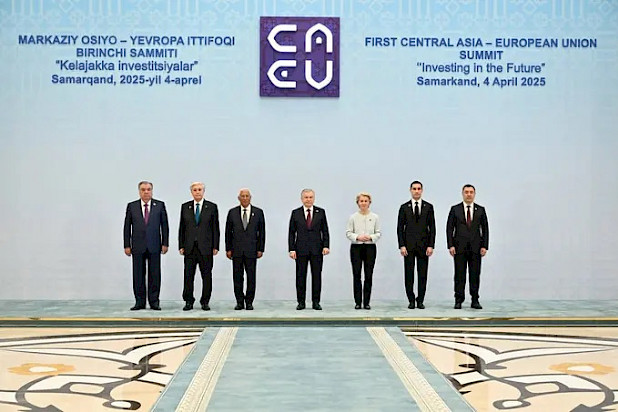
Lessons from the EU
As Central Asia navigates regional cooperation and lays the groundwork for future integration, there are several lessons it can learn from the EU.
Lesson #1: Central Asia needs its own "coal and steel."
Regional cooperation (let alone integration) cannot be built on brotherly feelings, leaders’ friendships, or abstract intentions. There must be tangible mechanisms at its core.
In the medium term, states need to identify their version of “coal and steel.” This could be water resources—previously considered an insurmountable source of conflict—or transport infrastructure projects that benefit all countries yet were once viewed as arenas of competition.
Lesson #2: The spillover effect.
European integration began in a very narrow sector. As cooperation in that sector deepened, it naturally extended to others, fostering integration.
Central Asia needs small projects to kickstart regional cooperation. Over time, as needs arise, these projects can expand organically.
For example, the long-discussed but unimplemented "Central Asian Schengen" may seem like a simple visa initiative. However, its launch would necessitate ongoing cooperation in multiple areas.
Lesson #3: Keeping regional cooperation on the agenda.
The cancellation of the 2020 consultative meeting of Central Asian leaders due to “busy domestic schedules” highlighted an issue. The five leaders only convened as a full group in 2021, despite the meetings starting in 2018. This level of inconsistency would be unimaginable in European integration.
Central Asian cooperation must become routine rather than a cause for excitement.
Lesson #4: Depersonalizing cooperation.
Currently, regional cooperation in Central Asia relies heavily on personal relationships between leaders. In Europe, however, integration quickly moved beyond elite-driven initiatives to encompass intergovernmental and societal levels.
For Central Asia, cooperation must transition from leader-to-leader relationships to state-to-state mechanisms that function regardless of political transitions.
Lesson #5: Investing in youth projects.
The EU heavily funds youth programs like Erasmus, which serves as a living advertisement for European integration. Engaging youth is vital for Central Asia’s long-term integration prospects.
Rather than imposing restrictions, governments should allow young people to decide what collaborations they find meaningful, be it e-sports competitions or academic conferences.
Conclusion
The new phase of regional cooperation observed since 2017 is still evolving. States seem to be acting intuitively, recognizing the right direction but lacking a clear vision. While dialogue is being maintained and formats like "C5+" continue, cooperation remains largely declarative. Leaders’ personal relations still dominate, and real projects that could serve as a foundation for deeper integration remain scarce.
Central Asia’s unreadiness for integration is not a failure but a reality shaped by history. Acknowledging this allows for a more pragmatic approach, setting realistic goals instead of forcing premature initiatives doomed to fail.
CentralasianLIGHT.org
April 5, 2025

